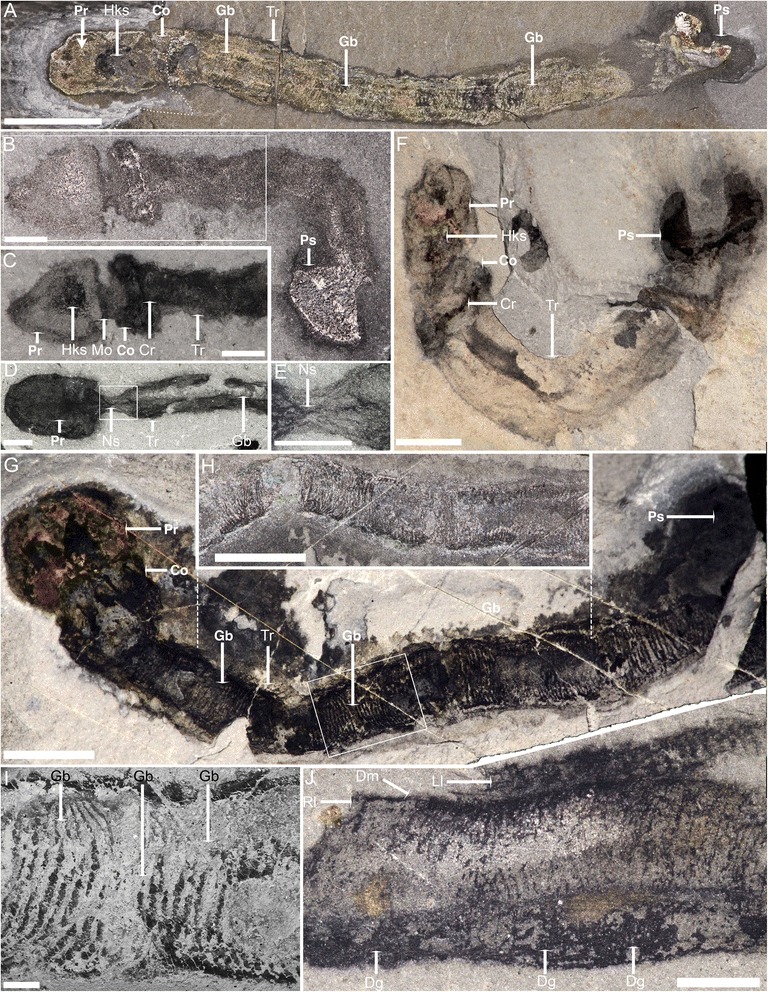Fig. 2.

General morphology of Oesia disjuncta from the Burgess Shale. (Specimens in d, e and j come from the Walcott Quarry; all other specimens come from Marble Canyon). a Note bilobed posterior structure and extended pharyngeal area (ROM 63737, part and counterpart are superimposed at the dashed line). b, c Tripartite body plan and internal organs in the proboscis (ROM 63711). d, e Large proboscis and possible nuchal skeleton (USNM 509815), see also Additional file 5A–C. f Well-developed bilobed posterior structure (ROM 63713). g–i Details of the pharyngeal area (h, partial counterpart of g, highlighted by vertical dashed line; i is close-up of framed area in g, ROM 63710). j Left and right pairs of gill bars preserved in lateral view (USNM 277844). Direct light images: a, b, h; polarized light images: c–g, j; SEM image: i. Co: collar, Cr: circum-collar ridge, Dg: digestive groove, Dm: dorsal midline, Gb: gill bars, Hks: heart-kidney-stomochord complex, Ll: lateral side left, Lr: lateral side right, Ns: nuchal skeleton, Pr: proboscis, Ps: posterior structure, Tr: trunk. Scale bars: a = 10 mm, b–e = 1 mm, f–h = 5 mm, i = 500 μm, j = 2 mm
